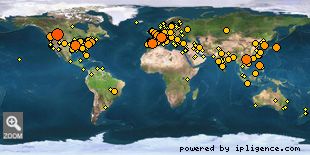 » NMR Jobs
» NMR Jobs |
|
|
|
|
|
|
 » Cool papers
» Cool papers |
|
|
|
|
|
|
 » NMR books
» NMR books |
|
|
|
|
|
|
 » NMR theses
» NMR theses |
|
|
|
|
|
|
 » NMR blogs
» NMR blogs |
|
|
|
|
|
|
 » NMR news
» NMR news |
|
|
|
|
|
|
 » NMR tweets
» NMR tweets |
|
|
|
|
|
|
 » NMR videos
» NMR videos |
|
|
|
|
|
|
 » NMR pictures
» NMR pictures |
|
|
|
|
|
|
 » Online Users: 187
» Online Users: 187 |
| 0 members and 187 guests |
| No Members online |
| Most users ever online was 1,278, 01-09-2024 at 07:38 AM. |
|
 » Welcome!
» Welcome! |
Welcome, NMR world!

Our visitors map.
|

 [NMR paper] 6-Strand to Stable 10/12 Helix Conformational Switch by Incorporating Flexible beta-hGly in the Homooligomers of Camphor Derived beta-Amino Acid: NMR and X-ray Crystallographic Evidence [NMR paper] 6-Strand to Stable 10/12 Helix Conformational Switch by Incorporating Flexible beta-hGly in the Homooligomers of Camphor Derived beta-Amino Acid: NMR and X-ray Crystallographic Evidence |
|
Mar 24, 2024 - 6:32 AM - by nmrlearner
|
 6-Strand to Stable 10/12 Helix Conformational Switch by Incorporating Flexible beta-hGly in the Homooligomers of Camphor Derived beta-Amino Acid: NMR and X-ray Crystallographic Evidence
6-Strand to Stable 10/12 Helix Conformational Switch by Incorporating Flexible beta-hGly in the Homooligomers of Camphor Derived beta-Amino Acid: NMR and X-ray Crystallographic Evidence
Rational design of unnatural amino acid building blocks capable of stabilizing predictable secondary structures similar to protein fragments is pivotal for foldamer chemistry/catalysis. Here, we introduce novel ?-amino acid building blocks: [1S,2R,4R]exoCDA and [1S,2S,4R]endoCDA, derived from the abundantly available R(+)-camphor, which is traditionally known for its medicinal value. Further, we demonstrate that the homooligomers of exoCDA adopt 6-strand conformation, which switches to a robust...
More...
|

 0 Replies | 62 Views
0 Replies | 62 Views
|

 [NMR paper] NMR-Based Analysis of Plasma Lipoprotein Subclass and Lipid Composition Demonstrate the Different Dietary Effects in ApoE-Deficient Mice [NMR paper] NMR-Based Analysis of Plasma Lipoprotein Subclass and Lipid Composition Demonstrate the Different Dietary Effects in ApoE-Deficient Mice |
|
Mar 24, 2024 - 6:32 AM - by nmrlearner
|
 NMR-Based Analysis of Plasma Lipoprotein Subclass and Lipid Composition Demonstrate the Different Dietary Effects in ApoE-Deficient Mice
NMR-Based Analysis of Plasma Lipoprotein Subclass and Lipid Composition Demonstrate the Different Dietary Effects in ApoE-Deficient Mice
Plasma lipid levels are commonly measured using traditional methods such as triglycerides (TG), high-density lipoprotein (HDL), low-density lipoprotein (LDL), and cholesterol (CH). However, the use of newer technologies, such as nuclear magnetic resonance (NMR) with post-analysis platforms, has made it easier to assess lipoprotein profiles in research. In this study involving ApoE-deficient mice that were fed high-fat diets, significant changes were observed in TG, CH, free cholesterol (FC), and...
More...
|

 0 Replies | 93 Views
0 Replies | 93 Views
|
|
 » BioNMR wiki
» BioNMR wiki |
|
|
|
|
|
|
 » NMR discussion
» NMR discussion |
|
|
|
|
|
|
 » NMR conferences
» NMR conferences |
|
|
|
|
|
|
 » NMR software
» NMR software |
|
|
|
|
|
|
 » Pulse sequences
» Pulse sequences |
|
|
|
|
|
|
 » NMR community
» NMR community |
|
|
|
|
|
|
 » NMR presentations
» NMR presentations |
|
|
 » NMR web resources
» NMR web resources |
|
|
|
|
|
|
 » NMR feature requests
» NMR feature requests |
|
|
 » NMR bookmarks
» NMR bookmarks |
|
|
|
|
|
|
 » Stats
» Stats |
Members: 3,202
Threads: 25,731
Posts: 26,117
Top Poster: nmrlearner (23,175)
|
| Welcome to our newest member, bpadmanabhan |
|



